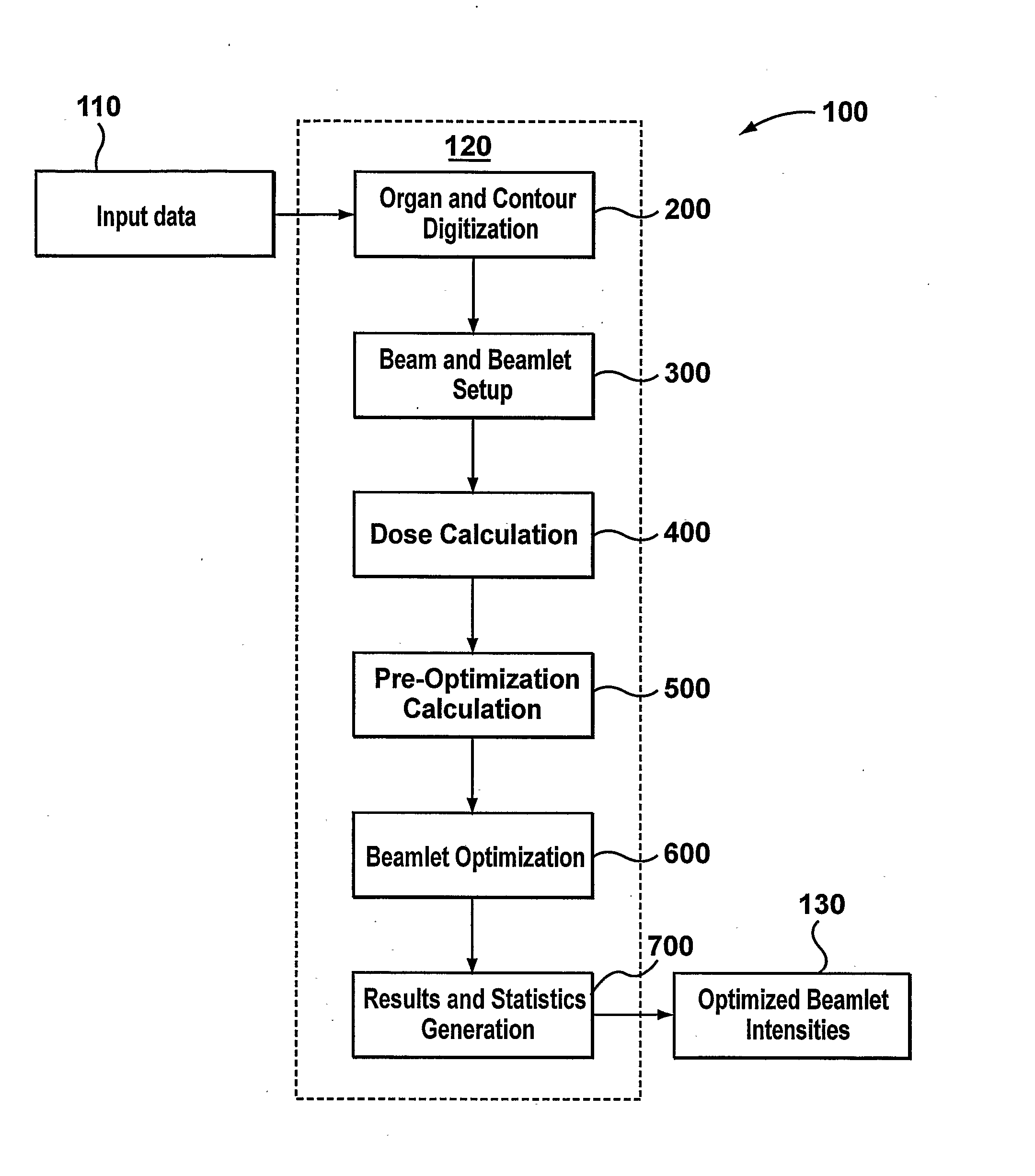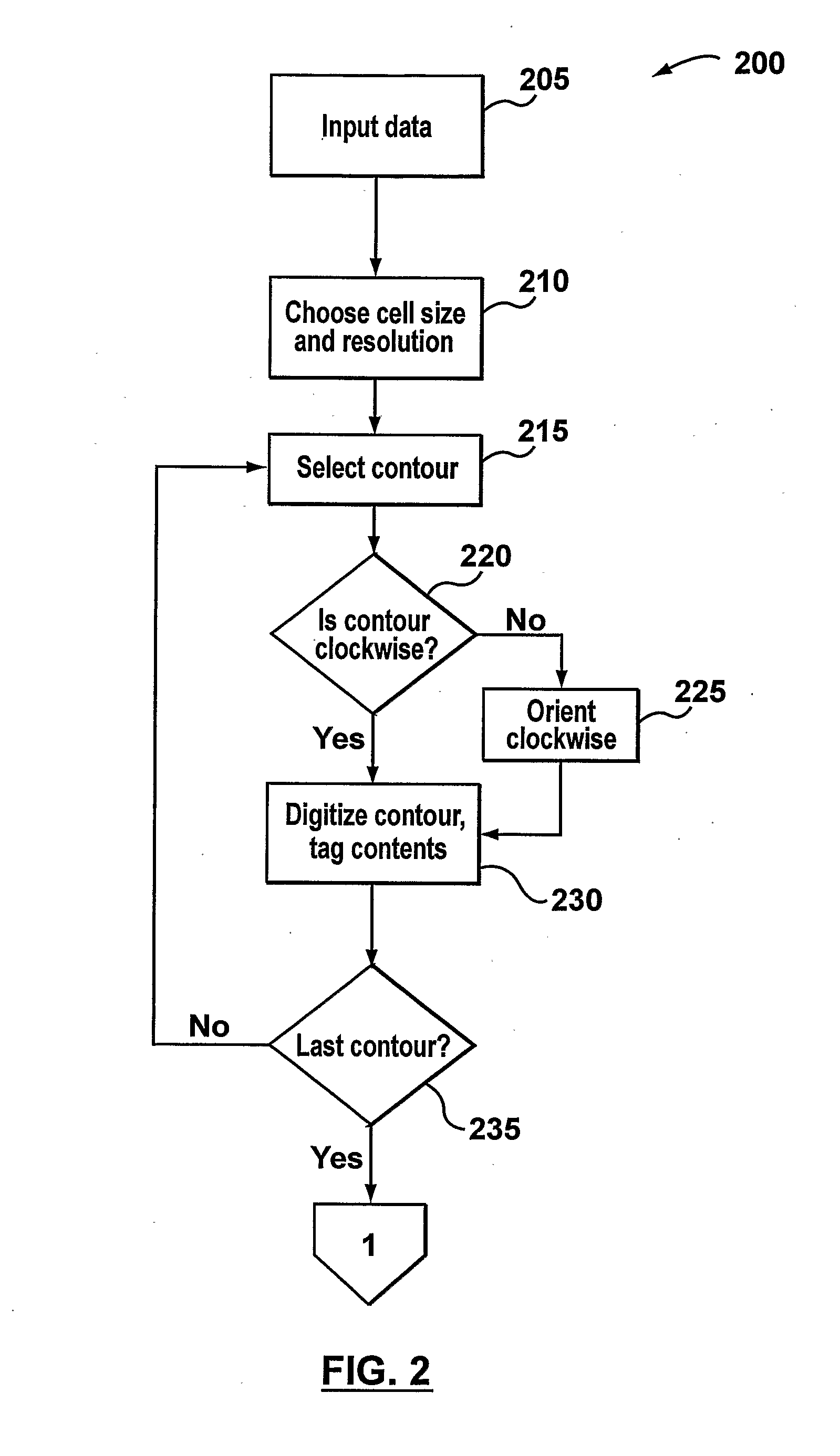Method and system for optimizing dose delivery of radiation
a radiation dose and radiation technology, applied in radiation therapy, computer-aided treatment prescription/delivery, therapy, etc., can solve the problems of sub-optimal plans, computationally faster, and difficult to achieve optimal plans, and achieve the effect of improving processing time, and reducing the number of radiation doses
- Summary
- Abstract
- Description
- Claims
- Application Information
AI Technical Summary
Benefits of technology
Problems solved by technology
Method used
Image
Examples
Embodiment Construction
[0029] The present invention generally relates to methods and systems for optimizing dose delivery of radiation therapy to tumor sites within a patient. Typically, the radiation will be directed toward a single tumor site, although it is not uncommon for multiple tumor sites to be treated simultaneously. While embodiments of the present invention are capable of taking into account multiple tumor sites, which are encompassed by the planning target volume (PTV), for simplicity of description, embodiments will primarily be described as they apply to a single PTV. Similarly, only a single organ at risk (OAR) and a single volume of other intervening tissues or organs, which is called herein all-the-rest (ATR), are described.
[0030] The number of PTV, OAR and ATR volumes, as well as the size and relative orientation thereof, will vary from patient to patient and according to the desired treatment plan determined by the radiation oncologist. For example, it is possible that the optimizatio...
PUM
 Login to View More
Login to View More Abstract
Description
Claims
Application Information
 Login to View More
Login to View More - R&D
- Intellectual Property
- Life Sciences
- Materials
- Tech Scout
- Unparalleled Data Quality
- Higher Quality Content
- 60% Fewer Hallucinations
Browse by: Latest US Patents, China's latest patents, Technical Efficacy Thesaurus, Application Domain, Technology Topic, Popular Technical Reports.
© 2025 PatSnap. All rights reserved.Legal|Privacy policy|Modern Slavery Act Transparency Statement|Sitemap|About US| Contact US: help@patsnap.com



